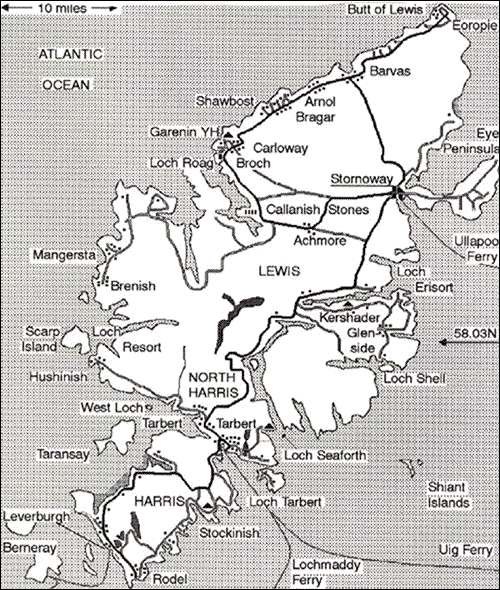
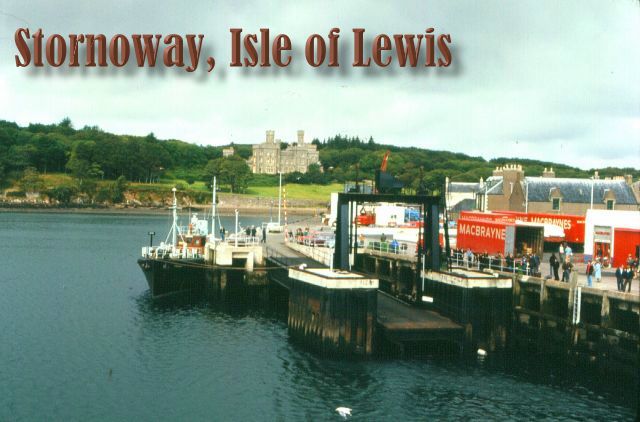
| Approaching the Hebrides by ferry from the town of Ullapool in NW Scotland in September 1976. The next picture was taken from the distant shore of the inlet, with the city of Stornoway to the right. |

| Buses operate from Stornoway on the northeast coast of the Isles of Lewis to the Isles of Harris to the south. The two islands are really one land mass, and both share the distinction of being the source of Harris Tweed. The land is, by our standards, barren and rocky, and what agriculture there is is quite modest. Below is a view of agribusiness on the Isle of Harris. |

| Peat is still commonly used as fuel, or at least it was at the time of my visit. Following are several photos of peat being cut and stacked to dry. The first photo shows an area where peat was recently cut, leaving the edge of the cut showing. |

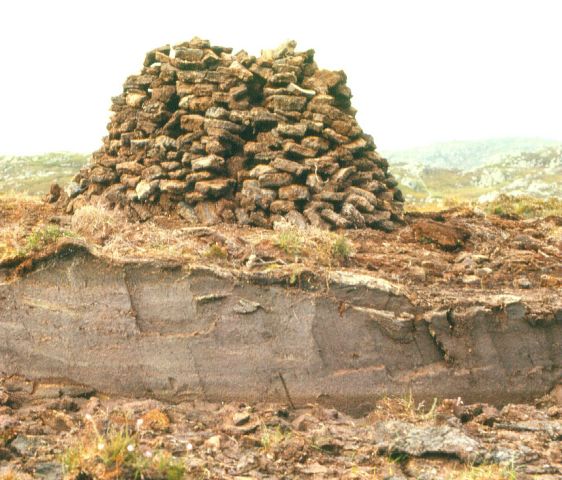
| Some people are clearly neater about the way they make stacks and cover them than others ... |

| Roads are a bit more relaxed, too. This is one of the main routes. One day I went in search of the traditional methods of making tweed. On the way back to the youth hostel where I was staying, I tried to hitchhike, but never got a ride, not because no one would pick me up, but because there was no one to do so. Eventually, I did get a ride in a school bus full of kids chattering politely in Gaelic, which is still the predominant language of the islands. |
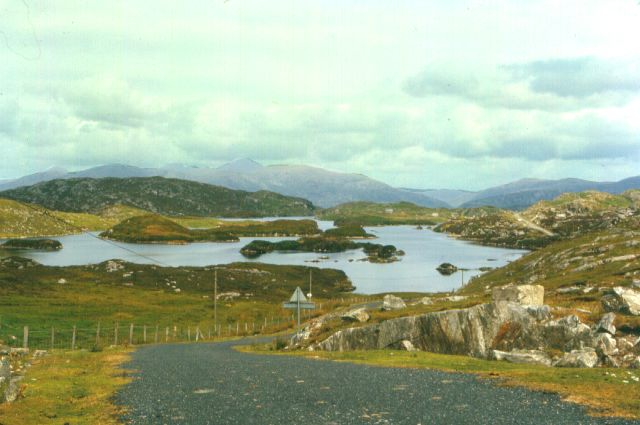
| The mainstay of commerce on Harris is, of course, Harris Tweed. I did find Mrs. MacDonald (nearly everyone, it seems, is a MacDonald) who was then still dyeing her wool with vegetable dyes which she made herself using such things as daisy petals for a bright yellow, lichens, and soot from the peat fire which produced a rich brown color. Walking down the roads of Harris, most houses have a small shed attached, and during the day, one can usually hear the loom in the shed clacking away, producing Harris Tweed. Below is a typical loom. |

| There is (or was) one youth hostel on Harris, at Stockinish. It features an outdoor cold shower (enclosed on three sides). Much warmer was the company of a couple who were doing a bicycle tour of the islands. From here they were returning to a reunion at Findhorn. An agonizing decision, but I wasn't able to accept their invitation to continue on with them, and we parted company at Loch Ness, from which I continued back south to visit friends in England and continue on to Wales. |
| As much as the Welsh pride themselves on the tradition of "croeso," or welcome, the people of the Hebrides are at least their equals. One of the other people at the hostel mentioned that they were able to buy a few eggs from the people in the house nearest the hostel. When I knocked at the door, I was invited into the kitchen where three generations of the family were discussing current topics. They were happy to sell me a couple of eggs, but only on my promise that I would tell anyone else that their chickens were not fit and producing. |
| I purchased some woollens in the area, but wasn't able to take them with me (I was traveling very lightly!), so I boxed them up and took them to the local post office to send home. When I got to the post office in the middle of the day, I found it locked up tight. A passerby eventually explained to me that I needed to knock at the door of the lady who operated the adjoining store. When I did, she happily opened the post office and affixed the proper labels and postage as I browsed the neatly stacked cans of food that adorned the unfinished walls of the store. |

| Below are some roadside views and an abandoned crofter's cabin. |
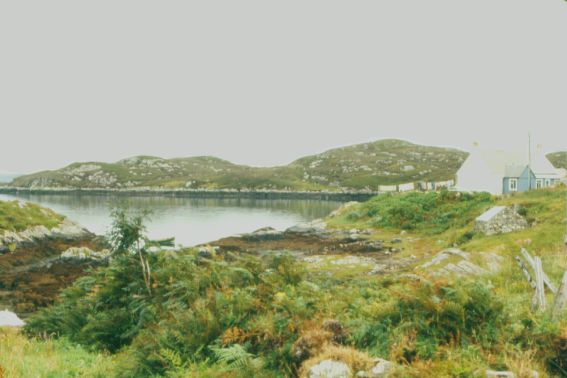
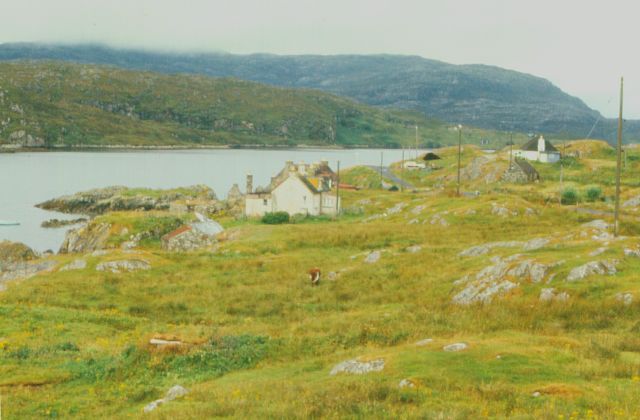
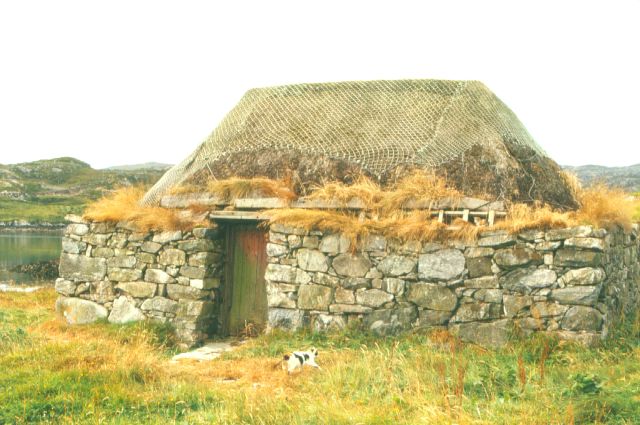
| From Tarbert on Harris, the other ferry link returns to the mainland via Uig on the Isle of Skye. This view is from the ferry looking towards the outer houses of Tarbert. |

| Click here for more information on the Hebrides. Also of interest is another journal of a visit to Lewis and Harris and information on cycling the Islands from which I borrowed the following map. |
